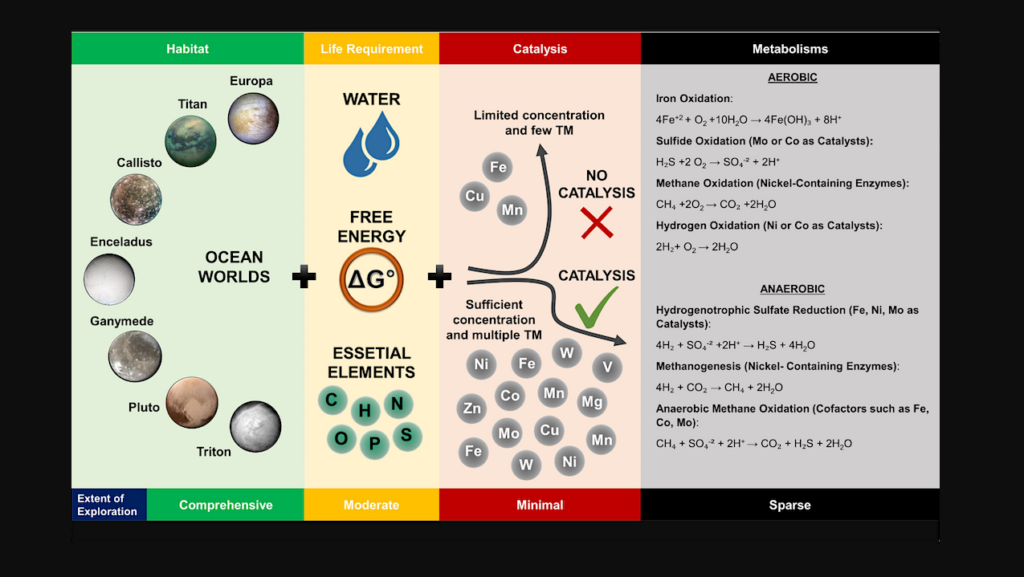A Pole-to-Equator Ocean Overturning Circulation on Enceladus

Enceladus is believed to have a saltwater global ocean with a mean depth of at least 30~km, heated from below at the ocean-core interface and cooled at the top, where the ocean loses heat to the icy lithosphere above.
This scenario suggests an important role for vertical convection to influence the interior properties and circulation of Enceladus’ ocean. Additionally, the ice shell that encompasses the ocean has dramatic meridional thickness variations that, in steady state, must be sustained against processes acting to remove these ice thickness anomalies. One mechanism that would maintain variations in the ice shell thickness involves spatially-separated regions of freezing and melting at the ocean-ice interface.
Here, we use an idealized, dynamical ocean model forced by an observationally-guided density forcing at the ocean-ice interface to argue that Enceladus’ interior ocean should support a meridional overturning circulation. This circulation establishes an interior density structure that is more complex than in studies that have focused only on convection, including a shallow freshwater lens in the polar regions.
Spatially-separated sites of ice formation and melt enable Enceladus to sustain a significant vertical and horizontal stratification, which impacts interior heat transport, and is critical for understanding the relationship between a global ocean and the planetary energy budget. The presence of low salinity layers near the polar ocean-ice interface also influences whether samples measured from the plumes are representative of the global ocean.
Ana H. Lobo, Andrew F. Thompson, Steven D. Vance, Saikiran Tharimena
Subjects: Earth and Planetary Astrophysics (astro-ph.EP); Fluid Dynamics (physics.flu-dyn)
Cite as: arXiv:2007.06173 [astro-ph.EP] (or arXiv:2007.06173v1 [astro-ph.EP] for this version)
Submission history
From: Ana H. Lobo
[v1] Mon, 13 Jul 2020 03:55:19 UTC (3,201 KB)
https://arxiv.org/abs/2007.06173
Astrobiology








